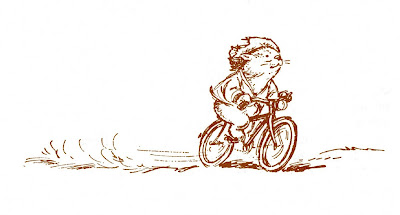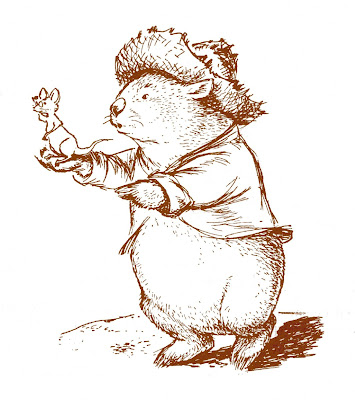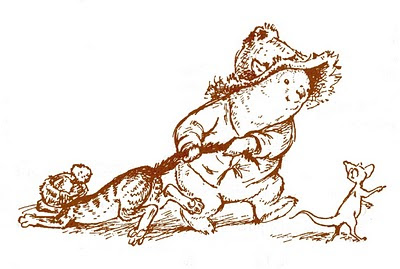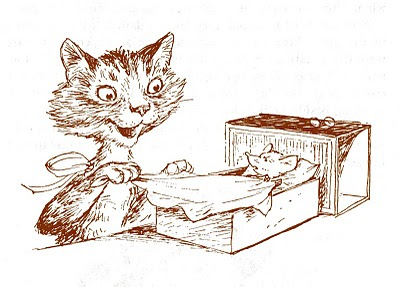The Eight Dog Chronicles
'Nansō Satomi Hakkenden' is a truly epic novel (100+ volumes) that was published in Japan over a thirty year period in the first half of the 19th century. Its author, Kyokutei Bakin (1767-1848), was blind towards the end and his daughter-in-law had to transcribe his dictation.
Bakin was the first person to make a living solely from writing and he was the most famous writer in Japan during his lifetime. His novel, though well received at the time of its publication, fell out of favour in the second half of the 19th century as western influence gained traction and popularity.
'Hakkenden' follows the story of eight samurai brothers and their adventures - set in about the 15th century - with themes of family honour and loyalty, as well as Confucian and Buddhist philosophy.
The story has been widely adapted in movies, television shows, video games, manga and anime series. It has also been a popular theme for Kabuki theatre productions and the following description comes from the Tokyo Kabuki Theatre's notes about their play from a few years ago:
"..the original novel is an immense epic by 19th century novelist Takizawa Bakin published over many years, but eventually reaching one-hundred and sixty volumes.
The Satomi clan is being attacked and its lord offers his daughter Princess Fuse to the warrior that will bring him the head of the enemy. It is his loyal dog that kills and beheads the enemy and, saying that her father must not go back on his word, Princess Fuse goes with the dog.
Nevertheless, the Satomi clan is defeated and one of its loyal retainers goes to rescue Princess Fuse, shooting the dog, but unfortunately shooting Princess Fuse as well. The eight crystal beads of her rosary, each engraved with the Chinese characters of one of the Confucian virtues, goes flying through the air.
Miraculously, each will be found with a newborn baby. These eight children, all of whom have the character inu for "dog" in their names, eventually meet and join together to restore the Satomi clan. The play features all the stars of the company and follows the adventures of the eight dog warriors as they meet and gradually join together, leading to a climactic fight on the roof of a dizzyingly high tower."[source]
- The images above are cover designs and title pages from the first edition of 'Hakkenden', illustrated by Yanagawa Shigenobu. The volumes have seen a lot of wear and tear and a selection of images is available at the National Diet Library in Japan (down the bottom: No. 49).
- Hakkenden Hakuryu-Tei: The Web Site of The Greatest Samurai Novel in Japan.
- Wikipedia: Nansō Satomi Hakkenden | Kyokutei Bakin.
- Hakkenden Kabuki.
- Thanks WILL!
- Previously in general: Japan.
Chicos Spanish Peanuts, 1929
Click image for 674 x 868 size. Scanned from Taschen's "All-American Ads of the 20s".
Labels:
1920s,
advertising,
book,
illustration,
magazine
Horse Bits
A 450+ page book-come-trade catalogue devoted to tricking out your horses's mouth.
16th century bling. Mad stuff.
'Ein Schönes und Nützliches Bißbuch (Pferdegebisse)' by Mang Sueter is available from the Bavarian State Library. {~A beautiful and useful bit-book (?) for horse teeth} This edition is from 1614, but the original was published in 1582. The images above were extracted from the downloadable pdf and are cropped slightly from the full book pages.
C And C Ginger Ale, 1923
Click image for 669 x 870 size. Scanned from Taschen's "All-American Ads of the 20s".
Labels:
1920s,
advertising,
book,
illustration,
magazine
British Ovaltine advert, 1936
Labels:
1930s,
advertising,
flapper,
hair,
magazine,
movie star,
movies
Wombat Tales













In honour of Australia Day (26 January), some delightful scratchy illustrations from the 1962 book by Ruth Park, 'The Adventures of the Muddle-headed Wombat'.
The illustrator for this book (part of a long series) was Noela Young.
Ruth Park | Noela Young
Buick Marquette, 1929
Click image for 649 x 878 size. Scanned from Taschen's "All-American Ads of the 20s".
Labels:
1920s,
advertising,
book,
car,
illustration,
magazine
Gustave Brisgand
J'avais déjà croisé Gustave Brisgand au détour de quelque numéro de la revue Fantasio, ébloui par ses jeunes femmes sophistiquées, parfois nues et dégageant un charme à faire rougir (si ce n'est plus) un bon vieux curé des campagnes. C'est en feuilletant le numéro 6 de la revue "Beauté" magazine datant de décembre 1929 que ce cher Gustave refit son apparition dans mes mirettes éberluées.
Les amateurs d'art m'en diront plus. Tout ce que je sais c'est qu'il vécut de 1880 à 1950, qu'il illustra La plastique féminine de Marcel Barrière (1929, Ed. Albin Michel), et qu'on trouve de lui un ouvrage intrigant intitulé Drogues et peintures (revue d'art offerte par le laboratoire Chantereau, 20 pages).
Je vous laisse apprécier les talents de cet artiste précieux avec quelques scans et quelques images trouvées sur des sites de vente.
Les amateurs d'art m'en diront plus. Tout ce que je sais c'est qu'il vécut de 1880 à 1950, qu'il illustra La plastique féminine de Marcel Barrière (1929, Ed. Albin Michel), et qu'on trouve de lui un ouvrage intrigant intitulé Drogues et peintures (revue d'art offerte par le laboratoire Chantereau, 20 pages).
Je vous laisse apprécier les talents de cet artiste précieux avec quelques scans et quelques images trouvées sur des sites de vente.


















J'ai vu aussi que son arrière petit-fils s'appelait Camille Conin et qu'il cherchait des informations sur GB. Qu'il se manifeste s'il souhaite apporter des éléments à ce post.
Subscribe to:
Comments (Atom)